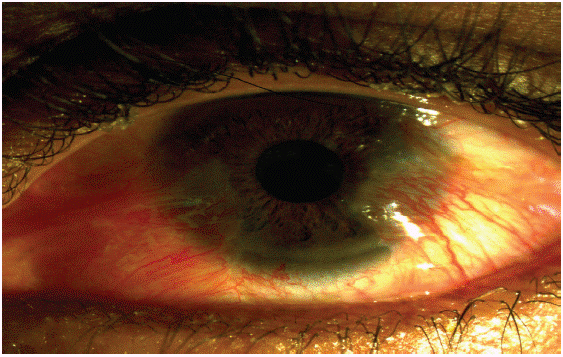
Clinical Image
Austin Ophthalmol 2024; 8(2): 1061.
Invasive Bilateral Pterygium with Two Heads: Report of A Case
Zeinebou Hmeimett*; Menal Tabchi; Lalla Ouafa Cherkaoui
Department of Ophthalmology A, Specialty Hospital, IBN Sina University Hospital, Med V University, Morocco
*Corresponding author: Zeinebou Hmeimett Department of Ophthalmology A, Specialty Hospital, IBN Sina University Hospital, Med V University, Morocco. Email: zeinebou_h@yahoo.com
Received: February 07, 2024 Accepted: March 27, 2024 Published: April 03, 2024
Clinical Image
25-year-old patient with no particular pathological history admitted for reduced quality of life due to almost permanent pain and redness. The ophthalmological examination reveals good visual acuity without correction, a bilateral pterygium in both eyes and the rest of the examination is unremarkable.
Pterygium is a leading cause of blindness and visual impairment. It is a generalized wedge-shaped fibrovascular lesion of epithelial tissue invading the cornea.

Pterygium usually occurs due to chronic sun exposure and develops at the nasal part of the cornea in 97. A rare type of pterygium is two-headed (temporal and nasal origins) and bilateral in shape, barely visible.
None of the multiple surgical techniques currently available is able to prevent recurrence. The adopted technique combining excision/tenonectomy-conjunctival deviation.